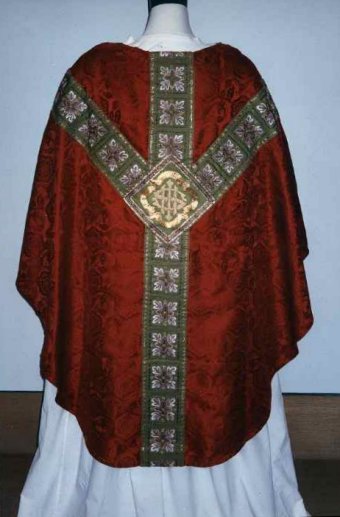
The ideals of the Arts and Crafts movement were highly influential for the decorative arts employed in many Anglican churches in Australia before World War II, and in this regard St Peter's is no exception. When Ernest Selwyn Hughes turned the principal Sunday liturgy into a high mass with full ceremonial in 1900, he opened the way for the creation of fine embroideries on the vestments that were used, as well as on altar frontals and processional banners, and released the creative skills of women in the parish. While we can only assume that some of the vestments used in that first decade were of English make, local women with exceptional abilities in embroidery were quick to produce work for St Peter's and a number of other churches. By 1914 St Peter's had an embroidery guild whose members received commissions from South Australia, New South Wales and Queensland, as well as within the state.
Ada, Joan and Minnie Montgomery, who lived close to the church at 140 Powlett Street, East Melbourne, created a green set of high mass vestments in 1914, using designs supplied by the St Dunstan's Society of London (one of several English organisations that designed and created vestments.) While this green set has not survived, the red set, created in 1916-17, of which this chasuble is a part, is of considerable significance; not only for the quality of the work, but because it represents the earliest set of vestments in the St Peter's collection created by local artists.